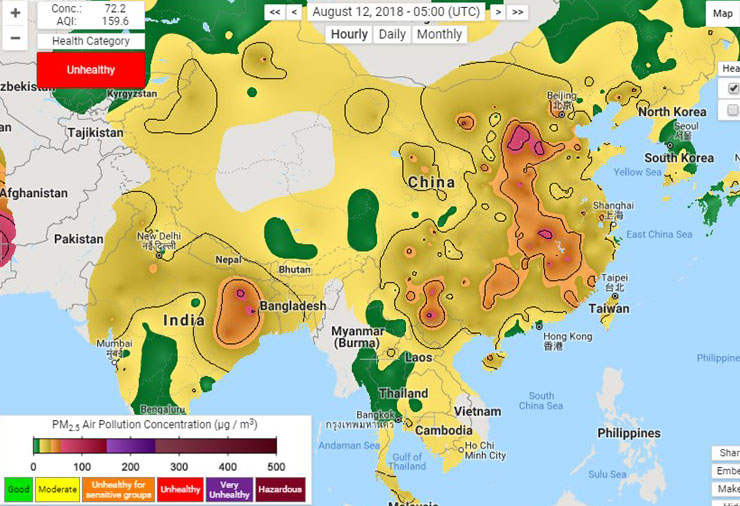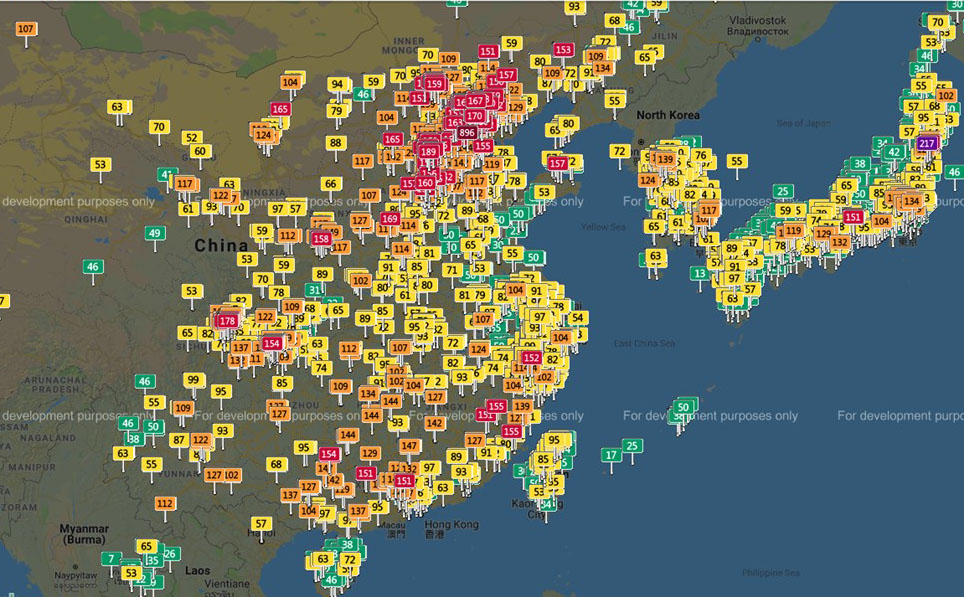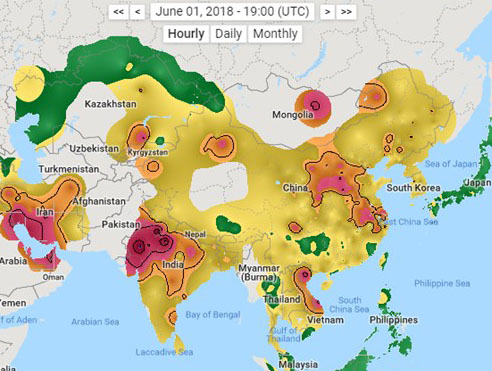
Air pollution is a major public health problem in Asia, especially in China and India. It has been widely known that air pollution is deadly worse in winter there because of all the fossil fuels and biomass burning used to keep warming.
In contrast, few complaints have been made for air pollution problem in summer. This does not mean that air quality over the continent of Asia is good in summer seasons.
Compared to the huge number of media reports on different episodes of air pollution in winter, media reports on air pollution problems in summer are quite limited. Currently, attention paid to air pollution problems in summer in Asia countries, especially in China, is insufficient.
Although a few number of media reports have documented air pollution in the summer in the U.S. and India, the extent and range of air pollution over the continent of Asia remain unclear for general public.
Generally, it is the hottest time in July on the continent of Asia. In this post, the extent and range of air pollution over the continent of Asia in July 2018 were demonstrated using several screenshots of the Real-Time Map of Air Pollution, hosted at the non-profit Berkelay Earth website.


As shown on the Map, moderate levels of air pollution patterns (AQI > 100, red) were persistently evident in northern China, western China and northern India in July 2018, with PM2.5 concentration fluctuated between 50 and 100 μg/m3 or higher. Mild levels of air pollution patterns (AQI < 100, yellow) were always evident across the whole countries of China and India.
It seems that air pollution is not kind of a seasonal thing nowadays. Most of the air pollutants emitted in winter may also be produced in summer. The air pollutants that are of concern in summer include sulfur dioxide (SO2) and nitrogen dioxide (NO2), mainly resulted from incomplete combustion of fossil fuels (coal or oil). They can come from stationary sources such as power plants and boilers, and/or mobile sources like cars, trucks, planes and ships.
According to media reports, there are several factors that contribute to air pollution in summer particularly. The first factor is related to air conditioners. As temperatures increase, air-conditioners are essential in most hot areas, but they are responsible for harmful emissions, since they may rely on coal-fired power plants for electricity.
Second, certain kinds of air pollutants are particularly worse in summer. Generally, they are photochemical oxidants such as ozone. When nitrogen dioxide (NO2) chemically interacts with ultraviolet radiation (sunlight) in hot weather, it can be broken apart into nitric oxide (NO) and an oxygen atom (O). The single oxygen atom then combines with an oxygen molecule (O2) to produce ozone (O3). Ozone is invisible but a potentially powerful respiratory irritant. It can cause a sort of burning-in-the-chest sensation when taking a breath, and is associated with a range of health outcomes including respiratory illnesses, hospital admissions and mortality.
An additional factor is related to high air pressure systems in fair and hot weather. High air pressure can create stable atmosphere or stagnant air. Without being able to flow freely and mix with air in the upper atmosphere, air pollutants are trapped near the surface where they are produced and accumulated, and where we breathe them in.
Given these factors, it may be assumed that air quality is better in early summer or late spring when the weather is neither cold nor hot. With a review of air pollution patterns over China and India during the past months, however, this hypothesis is not supported by evidence. Therefore, the key factor contributing to summer’s air pollution over the continent of Asia is still the over-amount of air pollutant emissions. Both Chinese and Indian governments should take measures to mitigate air pollution not only in winter, but also in summer.


Leave a Reply